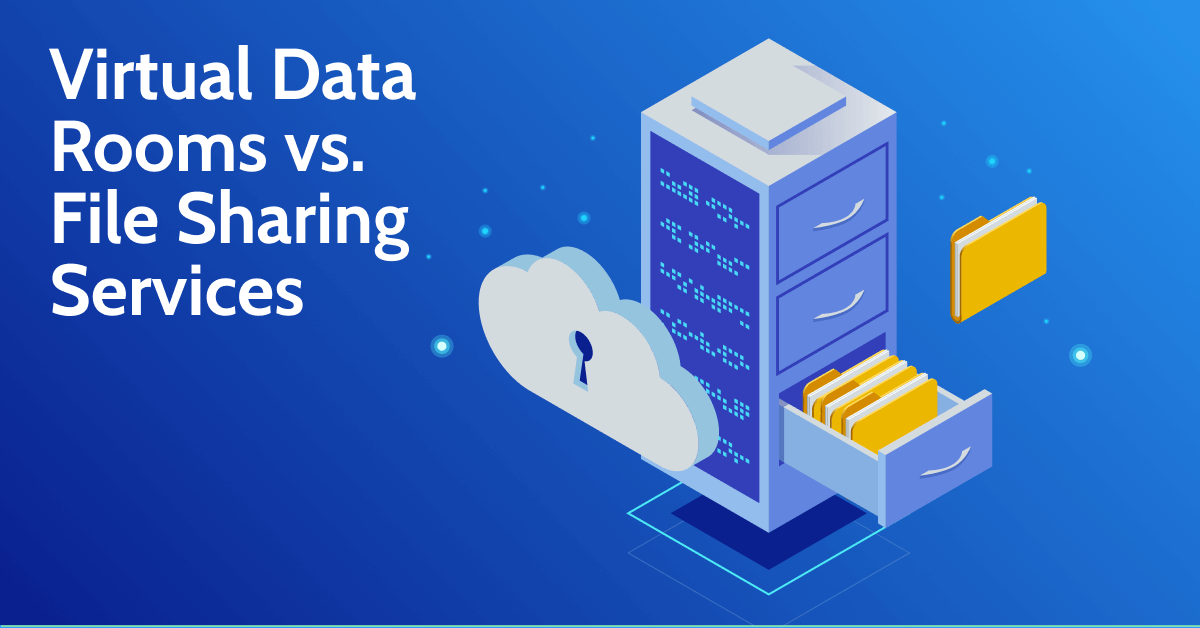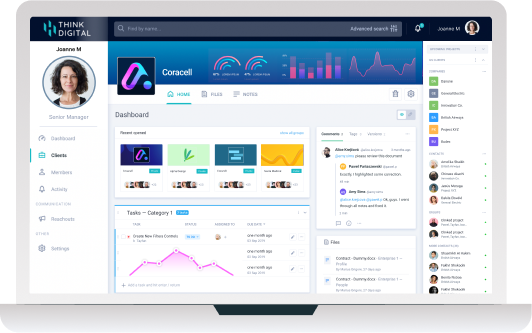When it comes to sharing files on a day-to-day basis, free file sharing services (such as Dropbox and Google Drive) have been the common go-to for many. However, whilst these file sharing services are inexpensive and seem effective for personal use, the concerns surrounding their security, limited functionality and control may be why there are many cases for businesses in which a data room could be more relevant.
|
What is a virtual data room? A virtual data room provides businesses with an ‘online repository of data’ and allows the business to share sensitive files and information with users (most commonly clients and business partners) from within a controllable, permissions-based environment. |
What are file sharing services? File-sharing services, such as Dropbox and Google Drive, mainly allow you to create and share files from anywhere and will automatically sync across all of your devices. You can have multiple users access and edit your files but have limited control over everything else. |
Businesses should look to understand the key differences between both virtual data rooms and file sharing services and consider why a virtual data room could be the better option overall.
Features
The first key comparison to be made between a virtual data room and file sharing services is the features that are available from each. In general, virtual data rooms are targeted towards businesses and file sharing services are more geared towards personal use. And so, naturally, you’ll find this reflected in the difference in features that are on offer.
It’s worth noting that what both options have in common is the ability to have instant access to files, offer one-click and restricted sharing (this is available on Dropbox for Business), and version control. However, virtual data rooms go much further.
Now, the main distinction between virtual data rooms from file sharing services is the security features. Virtual data rooms prioritize security over sharing capabilities. Therefore, key features that you won’t find in tools such as Dropbox and Google Drive, but will instead find in a virtual data room, include: user-based permissions (control varying levels of user access to individual documents), audit trail (track logins to your virtual data room, uploads, downloads, deletions etc.), complex passwords (requiring digits, special characters, or a combination of both), two-factor authentication and custom agreements (NDAs, SLAs).
Additional features that are offered within virtual data rooms include file approvals, file versioning, file locking, user-based content permissions and controlled external file sharing (for example, you can set expiry dates and times and set passwords).
Security
Both file sharing services and virtual data rooms offer the standard 256-bit encryption, SSL and datacenters required to protect your data. The difference between the two is that, yet again, virtual data rooms offer more for businesses and are therefore more secure than Dropbox, Google Drive and the rest.
In fact, Dropbox has been under fire in recent years due to a number of security breaches, including exploits using email addresses and passwords leaked from other services to access Dropbox accounts (Read: ‘Nearly 7 Million Dropbox Accounts Have Been Hacked).
And so, the purpose of virtual data rooms is to provide a heightened level of security, by combining security with increased control, which is something that services like Dropbox don’t offer for businesses.
Added security layers that virtual data rooms can offer businesses include TSL (transport security layer, works with SSL to encrypt your data in transit) IP restrictions, 99.9% uptime and private cloud solutions, as well as the previously mentioned features: user-based permissions, audit trail, two-factor authentication, complex passwords and custom agreements.
Application
As briefly noted, virtual data rooms are designed for businesses needing added security. Therefore, after comparing the security precautions of both virtual data rooms and file sharing services, the day-to-day uses of both should be easily distinguishable.
The types of files that should be securely shared within a virtual data room include: financial statements, legal materials, contracts, insurance documents, employee information, corporate books and records, operations documents and government compliance documents. In contrast, the types of files that could be shared with file sharing services could include: images, memos, meeting minutes, sales and marketing proposals and presentations.
With virtual data rooms, specific users can be notified of any amendments made to specific files that they are following, including comments, new version uploads and approvals. This can be especially useful for businesses (e.g. Accounting firms, Law firms and Educational institutes) looking to keep a close eye on how and when their files are being accessed and used.
Control
Despite both virtual data rooms and file sharing services being run by third-party vendors, virtual data rooms can provide more of the much-needed control for the software administrator. This includes controlling access on a file-by-file basis, crucial insights on changes made to files (such as audit trail, email notifications, real-time updates), white-label customization to meet branding requirements and more. With file sharing services such as Dropbox and Google Drive, control is limited to file sharing and access permissions.
It’s clear that virtual data rooms and file sharing services offer to solve different problems. File sharing programs like Dropbox are suitable for businesses that need to share non-sensitive files every day, whereas virtual data rooms aim to provide the highest possible security in order to safely share sensitive files every day. And so, it’s important to consider the types of files that your business deals with, and whether paying for a virtual data room is worth the money.
You can find out more about Clinked’s virtual data room here. Clinked also offers a free 10-day trial and consultations for businesses considering a more secure and efficient way of working with clients, team members and business partners.











Let Us Know What You Thought about this Post.
Put your Comment Below.